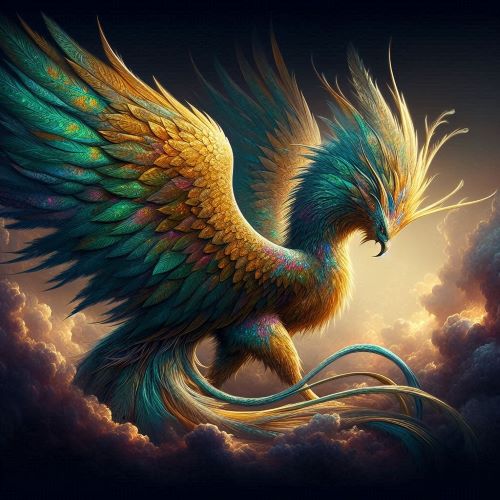Huma Bird : The Bird of Fortune
At a glance
| Description | |
|---|---|
| Origin | Iranian Mythology |
| Classification | Animals |
| Family Members | N/A |
| Region | Iran |
| Associated With | Royalty, Good Fortune, Luck |
Huma Bird
Introduction
The Huma Bird is a mythical bird of Iranian folklore and Sufi and Diwan poetry. Although it is believed to live in the sky, it never alights on the ground. According to some legends, the bird never comes to rest. It lives its life high in the clouds and never steps foot on the earth.
The bird is often referred to as a “bird of paradise” in Ottoman poetry. Early descriptions of the Paradisaeidae group portrayed the animals as having no wings or legs. The Conference of the Birds by Attar of Nishapur depicted the bird as a creature that was reluctant to embark on a journey, as it would supposedly compromise kingship over those it flew over. This concept is also used in Iranian literature as a metaphor for Arabs.
The feather-like features of the Huma bird were associated with the kingship-bestowing function in Indian mythology. In other words, the feathers on the heads of rulers were believed to be the plumage of this bird. In Turkish folk literature as well, the bird has a prominent place. In some works, the creature is depicted as a symbol of great fortune.
Physical Traits
The bird is believed to be a phoenix-like creature that consumes itself in fire every hundred years. It has the distinct characteristics of a female and male bird is considered to be a union of both forms. Both male and female sides of the bird have one wing and a leg each.
Family
It is said that this unique bird spends it entire life in high sky and gets down on to the ground only to feed on bones. It breeds in the sky and lays eggs when in the air which start falling down towards the land at great speed. Before the eggs hit the ground they hatch in the air and in the chick’s downward journey it develops its eyes. On reaching the vicinity of earth, the chick becomes consciousness and gives out a shrill cry with the fear of dashing to the ground to encounter death. It stabilizes its movement and takes flight upwards towards its safest sanctuary, its mother.
Other Names
Although predominantly known as Huma or the Huma bird, it is also known as Homa in Indian mythology. This is also related to the meaning of the the word Homa which is that of a sacrificial fire. This is in line with the tendency of the Huma Bird to burn itself to ashes like the phoenix.
Powers and Abilities
Catching this bird is considered to be beyond the imagination of most people. However, since it is believed that the person who kills it will die in forty days, the capture is never attempted. It is also believed that if the shadow of the Huma Bird falls on someone, he or she is blessed with good fortune. If the bird decides to sit on someone, it is considered to be an appointment of kingship.
Modern Day Influence
The Huma Bird has been associated with the European griffin and inspired many stories and folktales that are popular even today. Iran Air the official aircraft carrier of Iran used the Huma Bird in its insignia. The Uzbek Coat of Arms also feature the bird.
Frequently Asked Questions
Does the Huma bird exist?
The mythical creature known as the Huma bird does not exist but there is a breed of vulture present today called the bearded vulture who is attributed to the Huma bird.
What does the Huma bird symbolise?
The Huma bird is said to symbolise good fortune and luck. It is also associated with royalty and crowning new kings.
Where is the Huma bird said to live?
According to Persian or Iranian mythology the Huma bird is believed to have lived in ancient Iran.
Is the Huma bird similar to the Indian Hamsa?
The Hamsa in Indian mythology is believed to be a giant swan whereas the Huma bird is more likened to a bird of prey.
How can you kill the Huma bird?
The Huma bird is said to kill itself by jumping into flames every 100 years. No one attempts to kill the Huma bird as capturing it results in death.





